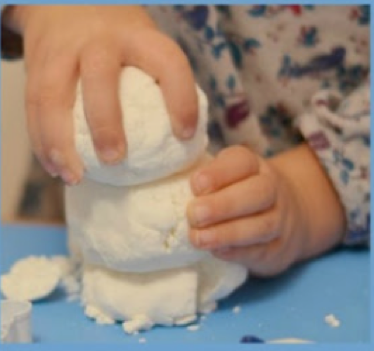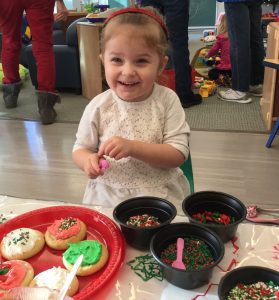Many happy occasions bring families together to share the joy of each other’s company. Husbands and wives combine ideas from their own backgrounds to form family traditions that are shared with children. It’s wonderful to see how these ideas change over the years as children grow and add their own input to the collage of celebration activities.
What do children learn from traditions that continue from year to year? They learn how special they are to the family, and they gain a feeling of belonging to a larger group. They learn to contribute to the family and to cherish the warm glow that comes from selfless giving. Each opportunity to learn social skills and build strong relationships with loved ones is a step towards maturity, and family members are blessed in the process.
The simplicity of the Christmas story and its message speak naturally to the hearts of children. Many families make the Bible the center of their celebration of this holiday. Society would like to make Christmas a very materialistic time of year, and parents need to be alert to this pressure. It’s helpful to read Mary Baker Eddy’s views of Christmas and to understand her de-emphasis on “Santa” (First Church of Christ, Scientist and Miscellany, p. 261).
Charitable organizations and churches can provide outreach opportunities in the form of clothing and food drives to broaden children’s perspectives on this holiday, introducing local and international avenues for giving. And if you have the opportunity to include a foreign exchange student, a friend from church, or some neighbors in your celebrations, your child will grow to accept your enlarged concept of family and naturally be inclusive in his thought of others.
Traditional music of the season can be introduced. Some families find time for performances geared to the age of their children, like “The Nutcracker” or a holiday Pops concert. But a sure way to bring seasonal music into your children’s experience is to sing it to them – in the car, before bed, or while decorating your home.
Consider keeping Christmas gently paced and tailored to the age of your children, then each year will bring more joy to the family celebration.
Gifts. It doesn’t take long for children to learn that the visit of a relative or the advent of a certain holiday will bring a gift or perhaps many gifts. If the gift becomes more important than the loved one or special holiday, it’s time to help the children focus on his own opportunity to share with another. The parent could pose questions to guide the child’s thought away from “receiving” and more towards “giving”:
- “How can we make Grandma and Grandpa feel welcome? Maybe you can make a pretty picture or pick some flowers.”
- “What would you like to make for Auntie from Play-doh?”
- “Can you think of something that Uncle might like to hear about? How about your cars (or dolls)?”
- “Would you like to help make Christmas cookies for our visit with the neighbors?”
Having something to “give” will help direct the excitement into a constructive channel, so the child will experience more of the spirit of the occasion.
Young children love to open gifts! They can do this more easily if the gifts are loosely wrapped or tucked into a festive gift bag. Allowing enough time to enjoy the gifts after they are opened may take a long time, but it is much more satisfying for little ones. Should there be an overabundance of new toys, some can be put away for later.
Books. Parents can help children recognize the reason behind holiday observations by reading simple books about the celebration. Frequently these become favorites as the time for the holiday draws near. For special holidays, like Christmas, a family might enjoy gradually building a small library that gets put away with the decorations. Grandparents love adding to this tradition, personalizing the inside covers. Reading these dedications then becomes an integral part of reading the book.
Here is a short list of books you might consider purchasing for a Christmas library:
*A Time to Keep: The Tasha Tudor Book of Holidays, by Tasha Tudor *All Paths Lead to Bethlehem, by Patricia McKissack *The Night Before Christmas, by Clement Clark Moore (many editions available) *Christmas in the Manger, by Nola Buck and Felicia Bond *The First Christmas Night, by Keith Christopher *The Story of Christmas, by Patricia Pingry *How the Grinch Stole Christmas, by Dr. Seuss, *The Animals’ Merry Christmas, by Kathryn Jackson.
Cards. From birth on, children receive greeting cards for many occasions from loved ones and friends. These tokens of caring can form links to people that the children may be very close to, or they may represent the love of dear friends whose paths the children will cross in later years. A collection of these mementos, stored in a box or put in an album, can be a treat for parent and child to share on a rainy day or for the child to review on his own in later years.
Photos. Family gatherings are often recorded by parents, grandparents, and friends. These occasions form links to the past that children love to review with parents and to remember. If albums of pictures are stored, many days can be enriched by reviewing these the memories.
Families whose loved ones live at a distance may choose to stay close by calling, Skyping, or Facetiming. This can be a regular sharing that helps to bridge the distance.
Holidays provide highlights for the years families spend together, especially when a recurring event brings fond memories to us all. May you enjoy forming special holiday traditions with your family.


 Ingredients
Ingredients
